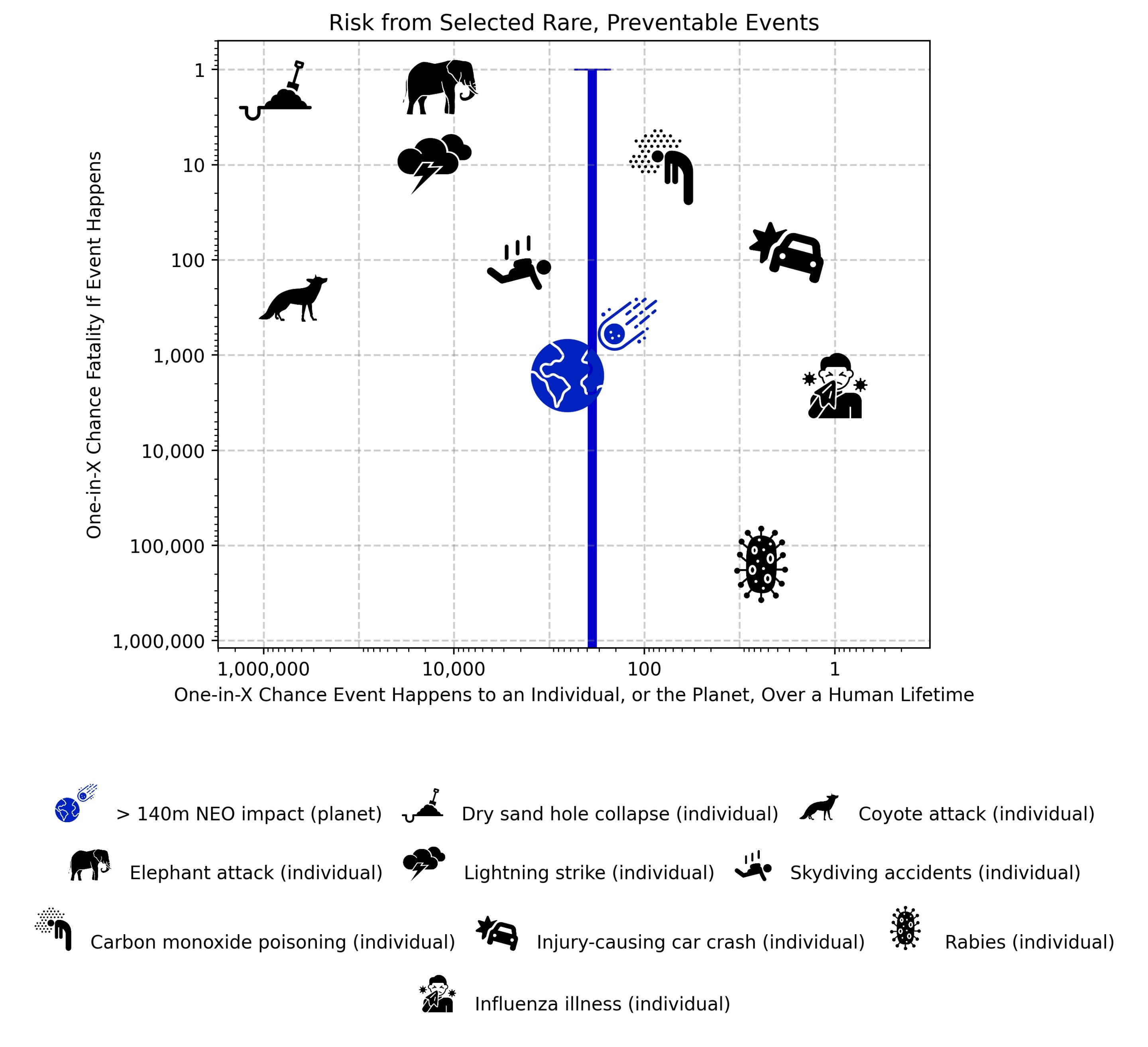💀 Your risk of dying from an asteroid vs a car accident: the surprising numbers
Follow us on Google News (click on ☆)
Carrie Nugent's team conducted a simulation based on 5 million near-Earth objects, or NEOs, with a diameter greater than 140 meters (460 feet). By modeling their orbits over 150 years, they calculated the frequency of Earth impacts. These NEOs are celestial bodies, such as asteroids or comets, whose trajectories bring them close to Earth, posing a potential collision risk.

Comparison of impact probabilities for near-Earth objects larger than 140 m with other predictable fatal events.
Credit: arXiv (2025). DOI: 10.48550/arxiv.2508.02418
The results indicate that an impact with a NEO of this size occurs approximately once every 11,000 years. However, the consequences vary enormously: an asteroid falling into the ocean might cause no deaths, while another striking a densely populated area could affect millions of people. The speed and location of impact play a crucial role in the scale of damage.
By comparing these probabilities to other fatal risks over a 71-year lifespan, the study reveals surprises. For example, being struck by lightning or attacked by a coyote is less likely than experiencing an asteroid impact. In contrast, events like car accidents are much more common, highlighting the relative rarity of cosmic disasters.
The numbers in detail
Events much more likely than a >140 m asteroid impact:
- Influenza: approximately 470,000 deaths/year (worldwide) – frequent.
- Car accidents (with injury): approximately 366 deaths/year (Massachusetts, USA) – frequent.
- Carbon monoxide poisoning: approximately 105 deaths/year (Denmark) – rare but very lethal.
Events with probability comparable to a >140 m asteroid impact:
- Dry quicksand collapse: approximately 3 deaths/year (USA) – very rare, almost always fatal.
- Elephant attacks: approximately 18 deaths/year (Nepal) – local, rare.
- Rabies (following bite): approximately 5 deaths/year (USA) – very rare thanks to vaccines.
- Skydiving accidents: approximately 1 death/year (Netherlands) – rare, voluntary activity.
Events less likely than a >140 m asteroid impact:
- Lightning: approximately 27 deaths/year (USA) – rare.
- Coyote attacks: approximately 0.03 deaths/year (USA) – extremely rare.
This work aims to help the public and policymakers better understand these risks, emphasizing the importance of planetary defense programs like the DART mission, which demonstrated the ability to deflect asteroids.
Near-Earth Objects (NEOs)
Near-Earth objects, or NEOs, are asteroids or comets whose orbits bring them close to Earth. They are classified according to their size and minimum approach distance, with diameters ranging from a few meters to several kilometers.
Monitoring NEOs is essential for assessing collision risks. Telescopes and international programs, such as those by NASA, track these objects to calculate their trajectories and identify potential threats.
NEO impacts can range from simple fireballs in the atmosphere to catastrophic events. Smaller ones often burn up before reaching the ground, while larger ones can cause tsunamis, fires, or impact winters, altering the global climate.
Understanding NEOs helps develop defense strategies, such as space missions to deflect or destroy dangerous asteroids, thus protecting life on Earth.
Planetary defense
Planetary defense encompasses efforts to detect, track, and mitigate threats posed by near-Earth objects. It involves international collaborations and advanced technologies to prevent catastrophic impacts.
Missions like DART (Double Asteroid Redirection Test) test methods to alter asteroid trajectories. In 2022, DART successfully modified the orbit of a small asteroid, proving the feasibility of this approach.
Besides deflection, other strategies include using nuclear explosives or gravitational tractors. Each method has its advantages and limitations, depending on the asteroid's size and composition.
Investing in planetary defense is seen as insurance for humanity. Although major impacts are rare, their destructive potential justifies ongoing research and preparation efforts.